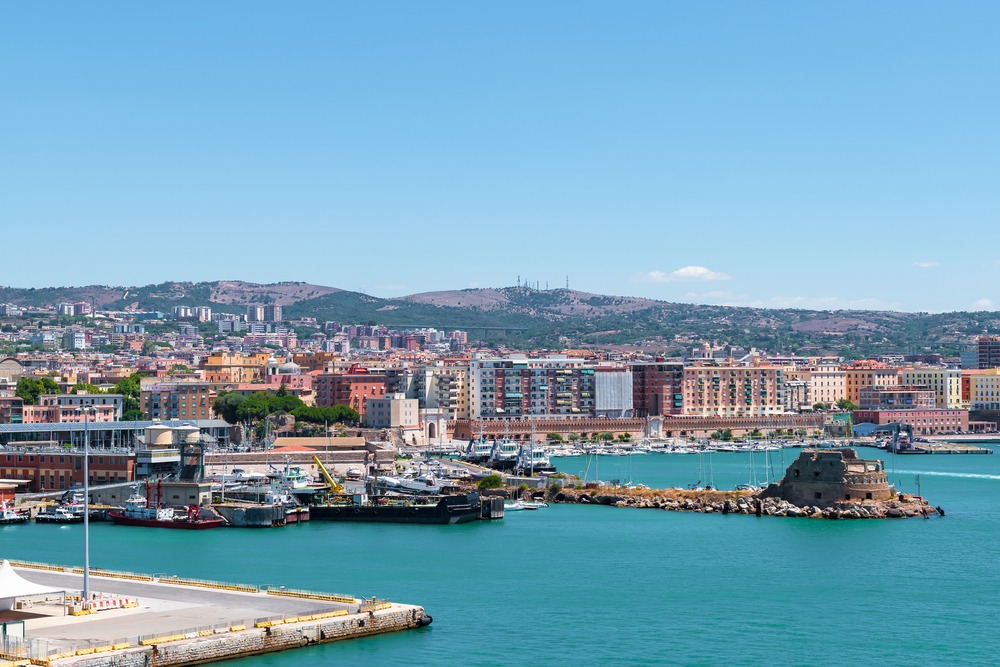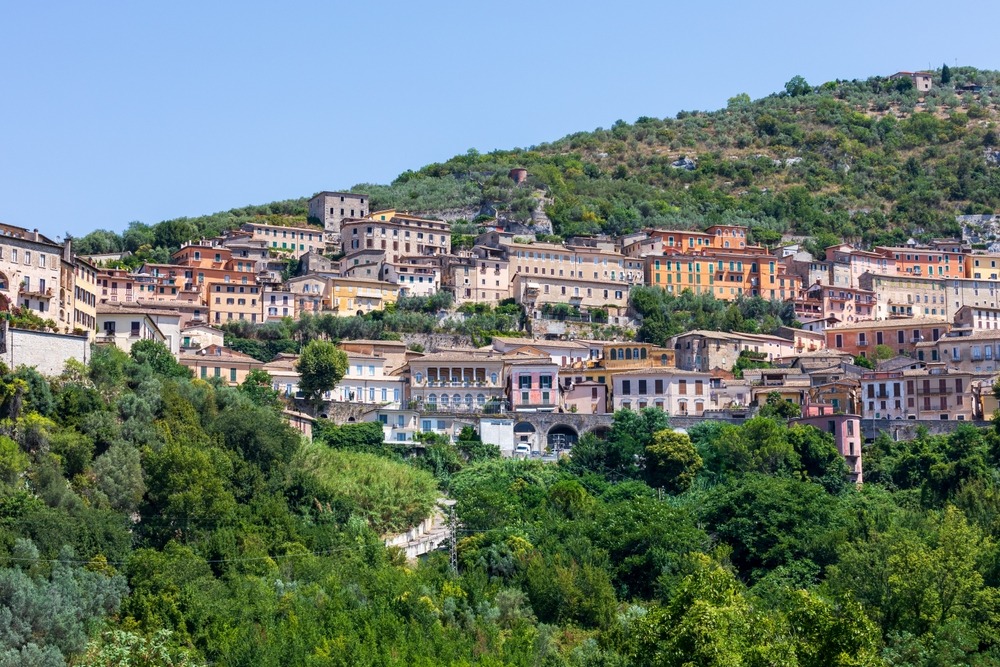Civitavecchia, Italy: Gateway to Rome – A Detailed History and the Top 25 Attractions

A DETAILED HISTORY OF CIVITAVECCHIA
Ancient Origins and Roman Foundations
The name Civitavecchia translates to “Old City,” a reference that belies the deep and rich layers of history within this ancient port town. Situated along the Tyrrhenian Sea about 50 miles northwest of Rome, Civitavecchia has served as a vital maritime link since antiquity. The area was originally settled by the Etruscans, who developed trade routes across the Mediterranean. However, it was during the Roman Empire that Civitavecchia emerged as a major harbor.
Around 100 AD, the Roman Emperor Trajan commissioned the construction of a new port, calling it Centumcellae (meaning “hundred cells” or “warehouses”), referring to the storage facilities built along the waterfront. Designed by the renowned architect Apollodorus of Damascus, the harbor included a breakwater, quays, and a military fortification system, making it one of the most advanced ports of the Roman world. The port played a crucial role in supplying the capital with grain, oil, and other goods from across the empire.
Medieval and Papal Influence
With the fall of the Roman Empire, Centumcellae experienced repeated invasions and was eventually abandoned for a time. During the early Middle Ages, it suffered from Saracen pirate raids. However, by the 8th century, it had begun to resurface as a fortified settlement. The papacy played an increasing role in its administration, with Pope Leo IV reestablishing the city in the 9th century.
By the 11th century, it was renamed Civitavecchia and became a key component of the Papal States. The Popes used the city as a strategic naval base and expanded its fortifications. In the 16th century, under Pope Julius II, famed artist and architect Donato Bramante helped redesign its harbor defenses. Later, Michelangelo contributed to the design of the city’s imposing Forte Michelangelo, a fortress that still stands guard over the port today.
Renaissance to Modern Era
During the Renaissance and Baroque periods, Civitavecchia continued to serve as the principal port for the Papal States. It grew economically and culturally, acting as a conduit for pilgrims and goods traveling to and from Rome.
In the 19th century, after the unification of Italy, Civitavecchia was integrated into the modern Italian state and continued to develop its maritime importance. It became a major departure point for emigrants heading to the Americas.
World War II and Reconstruction
Civitavecchia was heavily bombed during World War II due to its military and logistical significance. The city was left in ruins, including extensive damage to its historic buildings. Post-war reconstruction brought modernization, and the port resumed its role as a commercial and ferry terminal.
Today: Gateway to Rome and More
Now, Civitavecchia is a thriving city of over 50,000 residents and Italy’s busiest cruise ship port. While many visitors pass through on their way to Rome, the city itself offers remarkable architecture, rich history, a beautiful seaside promenade, and authentic Italian charm. Its blend of ancient ruins, medieval fortresses, Baroque churches, and modern amenities makes it a destination worthy of exploration in its own right.

TOP 25 ATTRACTIONS IN CIVITAVECCHIA
1. Forte Michelangelo
Commissioned by Pope Julius II and partially designed by Michelangelo, this 16th-century fortress stands as the city’s most iconic landmark. Towering above the port, it once defended against Saracen pirates and now serves as a testament to Renaissance military architecture.
2. Civitavecchia Port
Beyond being a bustling cruise terminal, the port area itself is scenic and historic. Stroll along the docks to admire yachts, ferries, and fishing boats, while watching cruise ships dock in one of Europe’s busiest ports.
3. Terme Taurine (Taurine Baths)
These ancient Roman thermal baths, located just outside the city, date back to the 1st century AD and were once frequented by Emperor Trajan himself. Visitors can explore the ruins of hot and cold baths, saunas, and mosaicked floors.
4. Piazza Leandra
This charming medieval square in the heart of the old town is lined with ancient buildings and narrow alleyways. It remains one of the most atmospheric areas of Civitavecchia.
5. Cathedral of San Francesco d’Assisi
The main church of Civitavecchia, this neoclassical cathedral was built in the 18th century atop a medieval church. Its baroque interior and serene nave make it a must-see.
6. National Archaeological Museum of Civitavecchia
Housed in an 18th-century building, this museum contains Roman and Etruscan artifacts from Centumcellae and surrounding areas, including sculptures, pottery, and inscriptions.
7. Largo Plebiscito
A central square surrounded by cafes, shops, and churches, it’s a perfect spot to relax and people-watch in the heart of the city.
8. Vanvitelli Fountain
A beautiful Baroque fountain built by Luigi Vanvitelli in the 18th century, featuring intricate marble sculptures and flowing water, located near the old harbor gate.
9. Mura Vanvitelliane (Vanvitellian Walls)
These elegant city walls, built under Pope Benedict XIV, once served as the defensive boundary of Civitavecchia and still add a historic character to the cityscape.
10. Church of the Holy Japanese Martyrs (Chiesa dei Santi Martiri Giapponesi)
A unique modern church dedicated to 26 Japanese Christians martyred in Nagasaki in 1597. Its contemporary architecture stands in contrast to the city’s many ancient sites.
11. Marina di Civitavecchia
The seaside promenade and marina area offer spectacular sunset views, seaside cafes, walking paths, and modern public art installations.
12. Porta Livorno
An impressive 18th-century gate near the harbor, part of the city’s former entrance system and decorated with Papal crests and classical details.
13. Il Pirgo Beach and Pier
Popular with locals, Il Pirgo offers a sandy beach and a pier extending into the Tyrrhenian Sea. Great for a swim, sunbathing, or a coastal stroll.
14. La Frasca Nature Reserve
A coastal natural park just north of the city, featuring rocky beaches, pine forests, and archaeological remains of Roman villas.
15. Grotta Aurelia
An ancient Roman tunnel and aqueduct located near the modern hospital, showcasing the city’s deep historical roots beneath the surface.
16. Piazza Aurelio Saffi
A public square with a relaxing atmosphere, local shops, and historical monuments commemorating Italian unification and other civic events.
17. Teatro Traiano
The city’s main theater, named after Emperor Trajan, offers cultural programming including operas, plays, and concerts in a historic setting.
18. Via Apollodoro
Named after the architect of Trajan’s port, this street winds through historical parts of the city and leads toward ancient Roman ruins.
19. Jewish Cemetery
A small but historically significant site documenting the presence of Jewish communities in Civitavecchia throughout the centuries.
20. San Lorenzo Market
A traditional covered market where locals shop for fresh produce, seafood, and Italian delicacies—a great place to sample authentic Roman coastal cuisine.
21. Fontana del Vanvitelli (Vanvitelli Fountain at the Port)
Located at the old port, this is a second, smaller fountain attributed to Vanvitelli’s design, often overlooked by tourists but beloved by locals.
22. Church of Our Lady of Grace
A small but historically important church originally built in the 17th century and often visited by sailors for blessings before setting out to sea.
23. Cruise Terminal Art Installations
Within the modern terminal, travelers will find rotating exhibitions, public murals, and sculptures reflecting maritime culture and history.
24. Museo Civico di Civitavecchia (Civic Museum)
A local museum dedicated to the daily life and traditions of Civitavecchia’s residents over the centuries, including shipbuilding and papal customs.
25. Day Trip Ferry Docks
Not exactly an attraction, but from here, visitors can catch boats to nearby islands like Sardinia, Sicily, and even Barcelona or Tunis—adding a truly international flair to this historical city.

Civitavecchia is far more than a port of call; it’s a destination where centuries of history converge with modern Mediterranean life. While often seen as merely the gateway to Rome, Civitavecchia rewards those who explore it with ancient ruins, Renaissance forts, authentic Italian culture, and coastal charm. Whether you’re fascinated by Roman engineering, enchanted by medieval streets, or drawn to seaside relaxation, Civitavecchia is a treasure waiting to be discovered on its own terms.

































